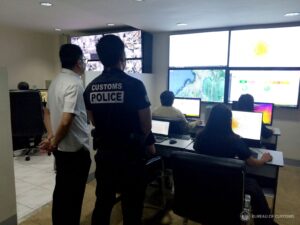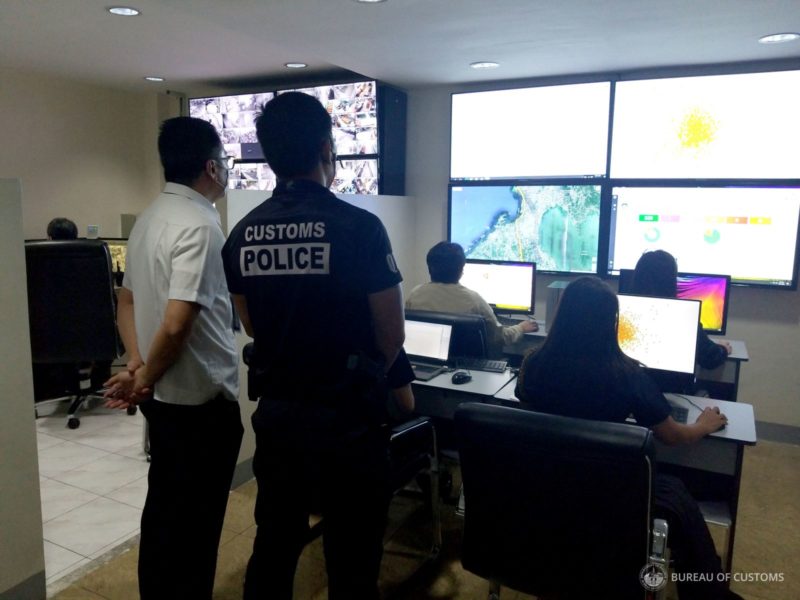
The Bureau of Customs (BOC) activated on September 23 a central monitoring center for the nationwide tracking of containers under the Electronic Tracking of Containerized Cargo (E-TRACC) System.
The E-TRACC Monitoring Center, manned by a team from the agency’s Enforcement Security Service (ESS), will track real-time location and status of containers to ensure these do not deviate from their route, using information from the electronic customs seal (ECS) affixed onto the containers. The ECS is a GPS-enabled sealing device or lock that can physically secure a cargo and provide real-time information on its location.
E-TRACC, which was launched last May, is a web-based tracking system for the inland movement of containerized cargoes during transit and transfer to other customs territories and facilities. It allows BOC to track, monitor, and audit the location and condition of cargoes, as well as obtain real-time alarms on diversion and tampering of cargoes.
READ: BOC orders e-tracking of cargoes in transit
E-TRACC was established under Customs Memorandum Order (CMO) 04-2020 issued last February.
The Enforcement Security Service said it is optimistic that the E-TRACC Monitoring Center can help enforce efficiency and provide invaluable information for the conduct of investigations and apprehensions. The ESS also warned that tampering with the ECS is punishable by law both civilly and criminally.
Under CMO 04-2020, an ECS is required during the transfer of cargo to a container yard/container freight station (CY/CFS) or other CFWs; transit of cargo bound for Free Zones, inland customs office, depots, or terminals; transit to customs bonded warehouses (CBW); export of cargo from Free Zones, inland customs office, depots or terminals, and CBWs to port of loading; and transfer of shipments subject to further verification and/or monitoring.
All container vans covered by CMO 04-2020 shall be affixed with an ECS before being cleared to depart from the starting point or point of discharge for the voyage to the end point or point of destination.
Except when warranted under CMO 04-2020, full completion of customs cargo clearance is mandatory before any shipment is sealed with an ECS.
Booking for an E-TRACC trip can be made one day earlier or up to one hour before departure of the container.
E-TRACC requires payment of P500 within a 10-kilometer (km) radius from port of discharge and P700 beyond the 10-km radius from port of discharge. The charge covers both arming and disarming of the ECS.
E-TRACC is currently implemented for all containers—except those containing electronic materials—discharged from the Port of Manila, Manila International Container Port (MICP), and Port of Batangas that are covered by the transit single administrative document (SAD) and bound for Laguna Technopark, Inc. and Cavite Economic Zone.
READ: E-TRACC for electronic materials bound for Laguna, Cavite eco zones deferred
The system is also being implemented in Davao and is scheduled for implementation soon in Subic.
Imports for other Philippine Economic Zone Authority economic zones will be covered by another customs memorandum.





